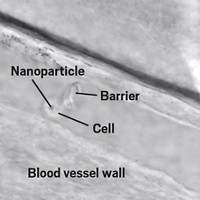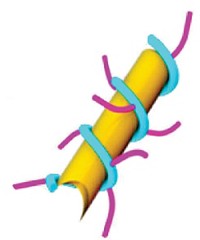Advertisement
Grab your lab coat. Let's get started
Welcome!
Welcome!
Create an account below to get 6 C&EN articles per month, receive newsletters and more - all free.
It seems this is your first time logging in online. Please enter the following information to continue.
As an ACS member you automatically get access to this site. All we need is few more details to create your reading experience.
Not you? Sign in with a different account.
Not you? Sign in with a different account.
ERROR 1
ERROR 1
ERROR 2
ERROR 2
ERROR 2
ERROR 2
ERROR 2
Password and Confirm password must match.
If you have an ACS member number, please enter it here so we can link this account to your membership. (optional)
ERROR 2
ACS values your privacy. By submitting your information, you are gaining access to C&EN and subscribing to our weekly newsletter. We use the information you provide to make your reading experience better, and we will never sell your data to third party members.
Materials
Micromotors Cruise Inside Living Cells
Researchers use acoustic waves to propel gold nanorod motors inside cells for the first time
by Lauren K. Wolf
February 17, 2014
| A version of this story appeared in
Volume 92, Issue 7
Ever since the 1966 sci-fi movie “Fantastic Voyage,” scientists have envisioned steering tiny rockets through the human bloodstream to deliver drugs to tumors and unclog arteries. During the past decade, some researchers have designed microscale motors, but those objects typically run on toxic fuel or can’t function in high-salt environments, properties that have barred their entry into living systems. Now, researchers led by Thomas E. Mallouk and Tony Jun Huang of Pennsylvania State University have for the first time propelled gold nanorod motors around the innards of living cells (Angew. Chem. Int. Ed. 2014, DOI: 10.1002/anie.201309629). HeLa cervical cancer cells took up the 3-µm-long, 300-nm-wide rods during a 48-hour incubation period. When the team placed the cells in an ultrasound chamber, acoustic waves scattered off the metallic rods, nudging the micromotors along at a speed of 60 µm per second. “It was interesting to see their erratic motion inside the cells,” Mallouk says. The rods zipped forward for short distances before crashing into organelles and changing direction. According to Mallouk, the team would like to better understand this propulsion mechanism as well as the mechanical and chemical effects the motors have when bumping along.





Join the conversation
Contact the reporter
Submit a Letter to the Editor for publication
Engage with us on Twitter